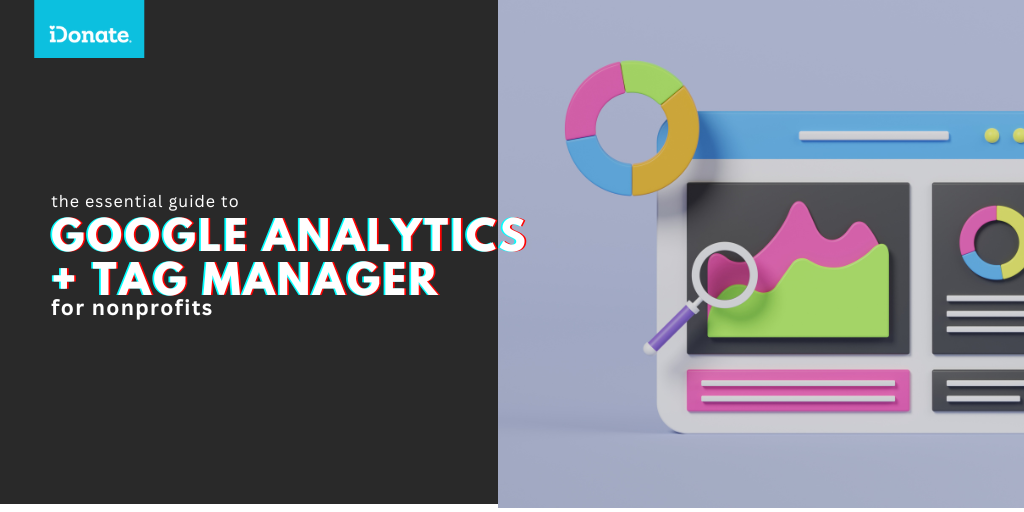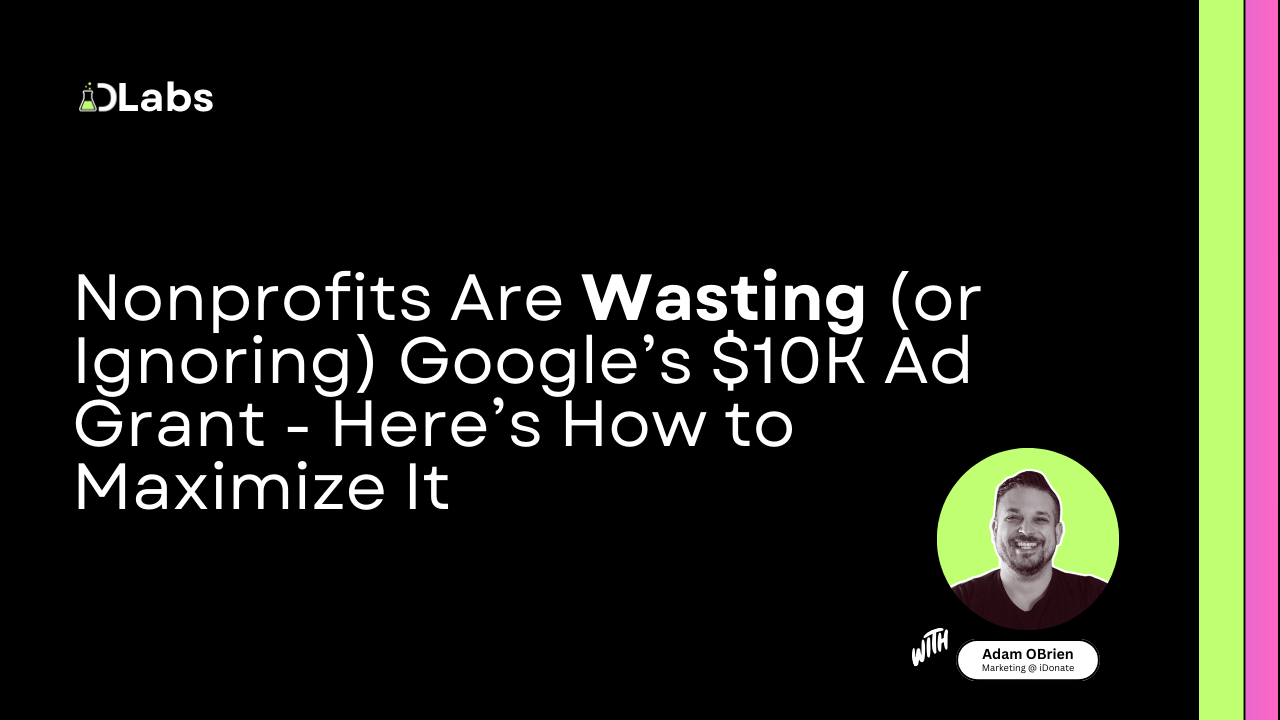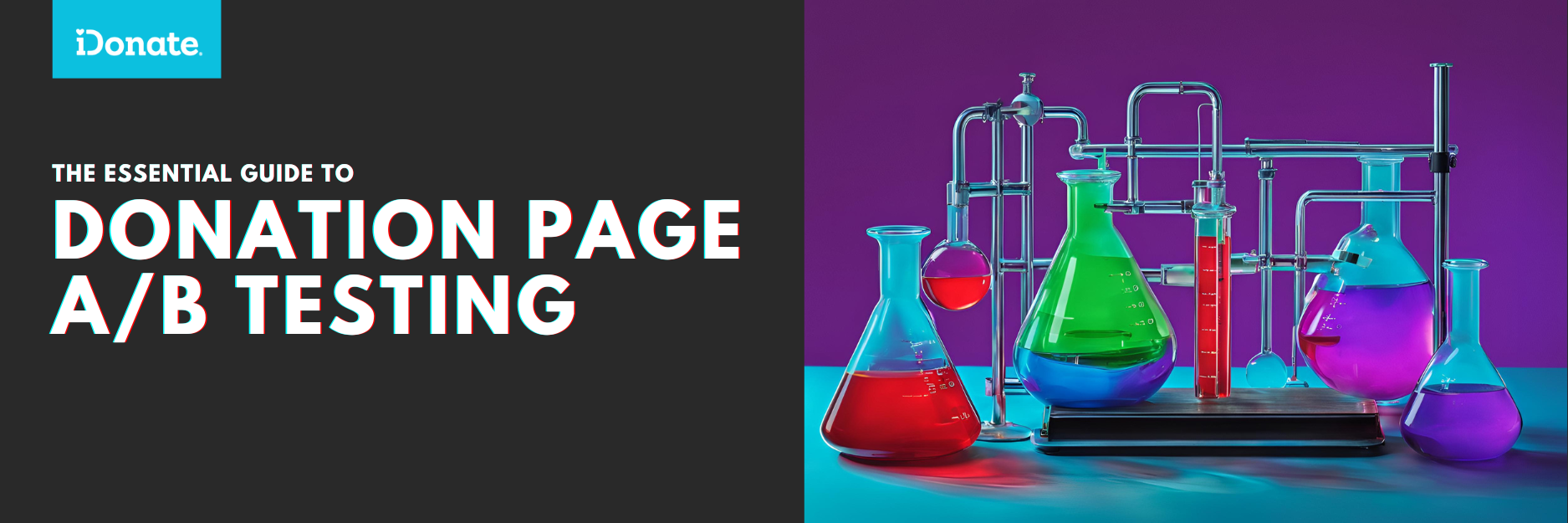Nonprofits Are Wasting (or Ignoring) Google’s $10K Ad Grant - Here’s How to Maximize It
The world of nonprofit fundraising is shifting—fast.

Use no-code tools to quickly build donation page variants, launch A/B tests, and get clear results that help you drive more donor conversions with a single platform.
New to online donation pages for your nonprofit? Start here.
Donation page A/B testing - no science degree needed.
Keep your donation page loading fast - and drive higher conversions.
4 min read
 Adam OBrien
:
January 6
Adam OBrien
:
January 6

In the world of digital fundraising, every click, page visit, and every donation tells a story.
For nonprofits, unlocking these stories is the key to driving higher donations and optimizing every fundraising campaign. That’s where Google Analytics (GA) and Google Tag Manager (GTM) come in—tools that take the guesswork out of online engagement and replace it with data-driven confidence.
If you’re responsible for website upkeep or online campaigns at your nonprofit, this blog is for you. Let’s break down why GA + GTM matter, how they supercharge digital fundraising, and how you can set them up to support your mission.
First, the basics.
Google Analytics is your nonprofit’s window into website performance. It tracks user activity—things like time spent on your donation page, bounce rates, and where visitors drop off—helping you understand your audience's behavior.
Google Tag Manager takes it a step further. It’s like a digital toolbox that lets you manage tracking codes (tags) without needing to dive into your website’s backend. Want to track button clicks on your donation form? GTM makes it easy—and doesn’t require a web developer every time you need a new tag.
Together, GA and GTM empower nonprofits to dig deeper into donor behavior and create more effective campaigns.
Here’s the big picture: Nonprofits thrive on connection, and data is the foundation of those connections in the digital age. GA and GTM aren’t just “nice to have” tools—they’re essential for modern fundraising. Here’s why:
In short: These tools help you work smarter, not harder, ensuring every fundraising effort makes the most of your resources.
Google Analytics 4 (GA4) is the newest offering of analytics and officially became Google’s default analytics tool in October 2020, with a mandatory cutover to GA4 taking effect in July 2023. For nonprofits still relying on Universal Analytics (UA), this shift represented a significant change in how data is collected and analyzed.
What’s New with GA4? GA4 introduces several powerful features designed to give nonprofits a clearer picture of their donor engagement:
Transitioning to GA4 unlocks smarter data analysis and ensures your nonprofit stays up-to-date with the latest analytics capabilities. To learn more about GA4 and how to set it up for your organization, visit Google’s official support page for GA4.
Data isn’t just numbers—it’s your roadmap to better campaigns. Here’s how GA and GTM directly impact digital fundraising:
Boost Conversion Rates (CVRs): Insights from GA help you identify what works (and what doesn’t) on your donation forms. Studies show that mobile-friendly donation forms and simplified designs can significantly improve completion rates, with mobile conversion rates averaging around 8% across nonprofit sectors.
Elevate Paid Ads Performance: GTM allows nonprofits to track the performance of paid campaigns more accurately, helping you focus on the strategies that bring in the most donors. Research indicates that Google Ads grants, widely used by nonprofits, can drive $2 for every $1 spent on campaigns with optimized targeting and messaging.
Create Better Donor Journeys: From a visitor’s first interaction on your website to completing a donation, GA + GTM enable nonprofits to refine every step. Did you know that 50% of donors are more likely to give again if their online experience was seamless? Tools like GA and GTM help ensure your donors’ journeys are smooth and engaging.
Take nonprofits leveraging platforms like iDonate: with GA and GTM integrated, they can tag donation forms, track user behavior, and pinpoint areas for improvement. This approach ensures they don’t just increase donations but also build trust and engagement with supporters.
Ready to get started? Here’s a high-level overview of the setup process:
At iDonate, we make it simple for nonprofits to harness the power of data.
Our donation form builder integrates seamlessly with GA and GTM, giving you the tools you need to track donor behavior in real-time.
Whether you’re tagging form submissions or tracking the success of your latest campaign, GA + GTM provide actionable insights that drive smarter fundraising decisions.
And because iDonate is built with simplicity in mind, you don’t need to be a tech guru to take advantage of these tools.
Google Analytics and Google Tag Manager are essential tools for nonprofits looking to improve their digital fundraising.
They help you see how donors interact with your site, pinpoint areas to improve, and track the impact of your campaigns.
Setting these tools up might take a little time, but the results are worth it—more insights, better decisions, and stronger fundraising outcomes.
If you’re ready to make data work harder for your nonprofit, start by exploring how to connect these tools to your website and donation forms.
The clearer your data, the more informed your next steps will be.
Next up now that GA + GTM is in place? Our essential guide on donation page load times to see how page performance directly impacts donation page CVR rates.

The world of nonprofit fundraising is shifting—fast.

In the digital fundraising landscape, nonprofits with compelling stories see higher donation completion rates than those relying on facts alone. As...

Table of Contents Introduction What is A/B testing? A/B testing lingo Why should you run donation page A/B tests? What can you A/B test? How do you...